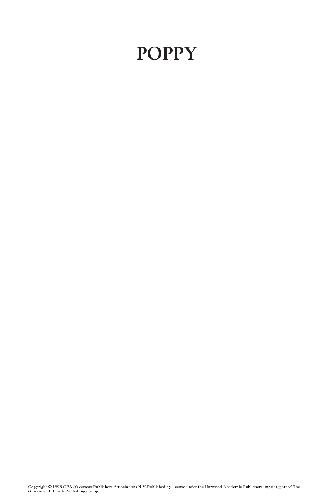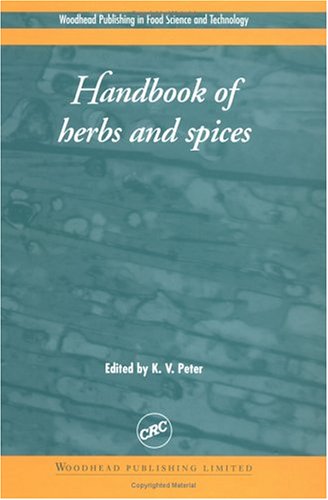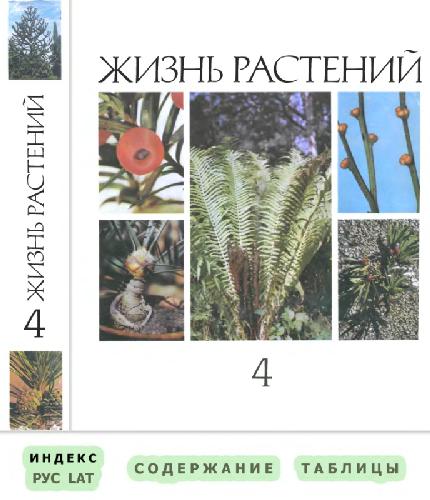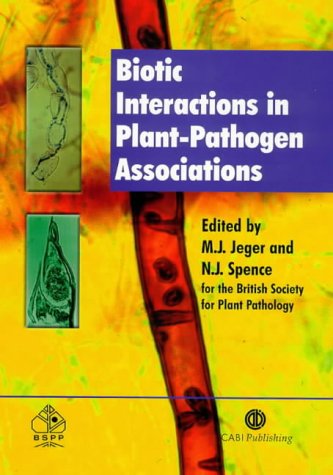Jeno Bernath9780203304181, 0203304187
Table of contents :
tf3136fm……Page 1
POPPY: The Genus Papaver……Page 3
CONTENTS……Page 5
FOREWORD……Page 7
PREFACE TO THE SERIES……Page 8
PREFACE……Page 10
CONTRIBUTORS……Page 11
1 APPEARANCE OF POPPY IN ANCIENT CULTURES……Page 13
TABLE OF CONTENTS……Page 0
3 MODERN APPLICATIONS OF OPIATES……Page 15
4 RECENT HISTORY OF POPPY……Page 16
REFERENCES……Page 17
1 INTRODUCTION……Page 18
2.2 Anatomy of Vegetative Organs……Page 19
2.4 Inflorescence Structure, Embryology and Pollen Morphology……Page 20
2.6 Fruit and Seed……Page 21
2.7 Phytochemistry……Page 22
3.1.2 Eschscholzioideae (Ernst)……Page 24
3.2.1 Chelidonioideae……Page 26
3.2.4 Papaveroideae……Page 27
6.1.1 Morphology and Karyology……Page 28
6.1.2 Photochemical Characteristics……Page 31
6.1.3 Species and Geographical Distribution……Page 32
6.2.2 Phytochemical Characters……Page 34
6.4.1 Morphology and Karyology……Page 35
6.5.1 Morphology and Karyology……Page 37
6.5.3 Species and Geographical Distribution……Page 38
6.6.1 Morphology……Page 39
6.7.3 Geographical Distribution……Page 40
6.8.2 Phytochemical Characters……Page 41
6.9.1 Morphology and Karyology……Page 42
6.9.2 Phytochemical Characters……Page 43
6.10.1 Morphology and Kaiyology……Page 44
6.11.1 Morphology and Karyology……Page 46
6.11.3 Geographical Distribution……Page 49
8 CLASSIFICATION OF DOMESTICATED PAPAVER SOMNIFERUM……Page 51
REFERENCES……Page 53
1.1 Root……Page 57
1.2.1 Stem……Page 58
1.2.3 Pedicel……Page 60
2.1.1 Development of the Flower (Sárkány and Szalay 1964)……Page 61
2.1.2 Characterisation of the Slower……Page 62
2.1.3.1 Perianth……Page 63
2.1.3.3 Gynoecium……Page 64
2.2 Fruit……Page 65
2.3.1 Characteristics of Seed……Page 67
3.1 General Characteristics……Page 70
3.2 Fine Structure……Page 71
REFERENCES……Page 72
1.1 Characteristic Phases of Development……Page 74
1.2 Accumulation of Alkaloids During the Life Cycle……Page 75
2.1.1 Photoregulation……Page 79
2.1.3 Effect of Light on Alkaloid Accumulation……Page 80
2.2.1 Thermoregulation……Page 83
2.2.3 Effect of Temperature on Dry Matter Production……Page 86
2.2.4 Effect of Temperature on Alkaloid Accumulation……Page 87
2.3.1 Effect of Water on Growth and Development……Page 89
2.3.2 Effect of Water on Alkaloid Accumulation……Page 91
2.4.1 Macroelements……Page 92
2.4.2 Microelements……Page 94
2.5 Biotic Factors……Page 95
2.6 Complex Physio-ecological Regulation of the Alkaloid Production……Page 96
REFERENCES……Page 98
2 CYTOGENETTCS AND REPRODUCTIVE SYSTEM……Page 101
2.2 Male Sterility……Page 102
3.2 Inheritance of Flower Colour……Page 103
4 INHERITANCE OF CHEMICAL CHARACTERISTICS……Page 104
5 BREEDING……Page 105
5.1 Exploitation of Heterosis……Page 106
5.3 Selection Criteria……Page 107
REFERENCES……Page 108
2 BENZYLISOQUINOLINE ALKALOIDS……Page 112
2.1 Papaverine……Page 113
2.3 Reticuline……Page 114
2.4 Laudanosine……Page 116
2.6 Codamine……Page 117
3.1 Morphine and Codeine……Page 118
3.2 Thebaine……Page 120
3.4 Neopine……Page 123
3.5 Pseudomorphine……Page 124
3.6 Salutaridine……Page 125
3.7 Somniferine……Page 126
4.1 Isoboldine……Page 127
4.2 Corytuberine……Page 128
5 BENZO[C]PHENANTHRIDINE ALKALOIDS……Page 129
5.2 Norsanguinarine……Page 130
6.1 Porphyroxine (Papaverrubine D)……Page 131
6.5 Glaudine……Page 132
7.1 Narcotine……Page 133
7.2 Narcotoline……Page 134
8.2 Narceinone……Page 135
9.1 Berberine……Page 136
9.2 Canadine……Page 137
9.4 Scoulerine……Page 138
10 PROTOPINE ALKALOIDS……Page 139
10.2 Allocryptopine……Page 140
10.4 Protopine……Page 141
REFERENCES……Page 142
2.1 DAHP Synthase……Page 166
2.3 3-Dehydroquinate Synthase-Shikimate Dehydrogenase……Page 169
2.5 5-Enoylpyruvylshikimate-3-Phosphate (ESPS) Synthase……Page 170
3 BIOSYNTHESIS OF PHENYLALANINE, TYROSINE AND TRYPTOPHAN……Page 171
3.2 Biosynthesis of Phenylalanine and Tyrosine……Page 172
3.2.1 Chorismate Mutase……Page 174
3.2.4 Arogenate Dehydrogenase……Page 175
4 BIOSYNTHESIS OF THE PRIMARY PRECURSORS OF THE BENZYLISOQUINOLINE SKELETON……Page 176
4.1 Tyrosine/3,4-dihydroxyphenylalanine Decarboxylase……Page 178
5.1 (S)-Norcoclaurine Synthase……Page 179
5.5 3′-Hydroxy-N-methyl-(S)-reticuline-4′-O-methyltransferase……Page 181
6.1 1,2-Dehydroreticuline Reductase……Page 182
7 BIOSYNTHESIS OF THEBAINE FROM (R)-RETICULINE……Page 183
7.1 Salutaridine Synthase……Page 184
7.2 Salutaridine: NADPH 7-oxidoreductase……Page 185
8 BIOSYNTHESIS OF CODEINE AND MORPHINE FROM THEBAINE……Page 186
ACKNOWLEDGEMENTS……Page 188
REFERENCES……Page 189
2 EFFECT OF CULTURAL CONDITIONS AND PLANT REGENERATION ON MORPHINANE ALKALOID PRODUCTION……Page 196
2.2 Plant Regeneration……Page 200
2.3 Morphinane Production with Laticifer Formation……Page 201
3 ALKALOID PRODUCTION IN SUSPENSION CELL CULTURES……Page 202
4 BIOTRANSFORMATIONS OF ALKALOIDS……Page 205
4.1 Bio transformation of Codeinone to Codeine……Page 206
4.1.1 Immobilisation of Cell Cultures……Page 207
4.2 Conversion of Codeine to Morphine……Page 208
REFERENCES……Page 210
2 CHARACTERIZATION OF MAJOR LATEX PROTEINS……Page 215
3.1 Biolistic Transformation of Poppy Somatic Embryos……Page 217
3.2 Agrobacterium-Mediated Transformation and Regeneration of Poppy……Page 218
4 CLONING OF ALKALOID PATHWAY GENES……Page 219
5 FUTURE PROSPECTS: METABOLIC ENGINEERING OF ALKALOID PATHWAYS……Page 220
REFERENCES……Page 221
2 CULTIVATION OF STRAW AND SEED……Page 224
3 LAND AND CLIMATIC REQUIREMENTS……Page 226
4 PREPARATION OF SOIL AND FERTILIZATION……Page 227
5 SOWING……Page 228
6.1 Plant Density and Thinning……Page 231
6.3 Weed Control……Page 232
7 PLANT PROTECTION……Page 234
8 HARVESTING AND POST-HARVEST TREATMENT……Page 235
9 CHARACTERISTIC CULTIVARS……Page 238
REFERENCES……Page 239
2.1 Main Production Areas……Page 241
2.2.1 Selection of the Land……Page 242
2.2.2 Plant Material……Page 243
2.2.4 Sowing……Page 244
2.2.6 Plant Protection……Page 245
2.2.7 Harvesting……Page 246
3.1 Main Production Areas……Page 247
3.2.1 Selection of the Land……Page 248
3.2.3 Harvesting……Page 249
4.2.2 Harvesting……Page 250
REFERENCES……Page 251
1 INTRODUCTION……Page 253
3 SITE SELECTION……Page 256
4 GERMPLASM AND SEED SELECTION……Page 257
5.1 Crop Rotation……Page 259
5.5 Nutrition……Page 260
5.5.2 Methods and Rates of Fertilizer Application……Page 261
5.5.4 Boron……Page 262
5.7 Growth Regulation……Page 263
5.8.1 Irrigation and Nitrogen Interactions……Page 264
5.9.1 Plant Density and Lodging……Page 268
5.9.2 Rectangularity……Page 269
5.9.4 Irrigation and Plant Density Interactions……Page 270
6.1 Sclerotinia sclerotiorum……Page 272
6.2 Entyloma fuscum……Page 273
7.1.1 Changes in Dry Matter……Page 274
7.1.3 Effects of Rain and Delayed Harvest……Page 277
7.2 Drying and Storage……Page 278
REFERENCES……Page 279
2 BOTANY AND DISTRIBUTION……Page 282
3 CHEMISTRY AND PHARMACOLOGY……Page 283
4 PHYLOGENETIC RELATIONSHIPS IN SECTION OXYTONA……Page 284
5.2.1 Direct Sowing vs. Transplanting……Page 285
5.3.2 Thebaine Fluctuations During Plant Development……Page 286
6.1 Genetic Variation in Thebaine Yield Components, Heritability and Selection Response……Page 287
6.3 Chemical Spectrum of Inter-specific Hybrids……Page 288
7 TISSUE CULTURE FOR ALKALOID PRODUCTION AND VEGETATIVE PROPAGATION……Page 289
REFERENCES……Page 290
2.1 Morphine……Page 293
2.2 Codeine……Page 297
2.3 Narcotine……Page 298
2.4 Papaverine……Page 299
3.1 Thebaine……Page 300
3.3 Neopine……Page 302
3.6 Laudanosine……Page 303
3.9 Protopine……Page 304
3.11 Cryptopine……Page 305
3.14 Corytuberine……Page 306
3.17 Sanguinarine……Page 307
3.21 Stepholidine……Page 308
3.23 Berberine……Page 309
REFERENCES……Page 310
1.1.1 Opium……Page 321
1.1.2 Poppy Straw……Page 323
1.2.1 Extraction of Opium……Page 324
1.2.3 Extraction from Straw Concentrate……Page 326
1.4 World Stocks of Narcotic Drugs……Page 328
2.1 Opium Production Estimates……Page 330
2.1.1 World Area of Illicit Cultivation……Page 332
2.1.3.2 South Asia……Page 333
2.1.3.3 West Asia (golden crescent)……Page 334
2.2 Main Routes of Illicit Opium Traffic……Page 335
3 OBJECTIVES OF INTERNATIONAL DRUG CONTROL……Page 336
REFERENCES……Page 337
1 FIELDS OF UTILIZATION……Page 338
2.1 Seed Oil……Page 339
2.3 Sterols……Page 340
3 WORLD TRADE OF POPPY SEED……Page 341
REFERENCES……Page 342







Reviews
There are no reviews yet.